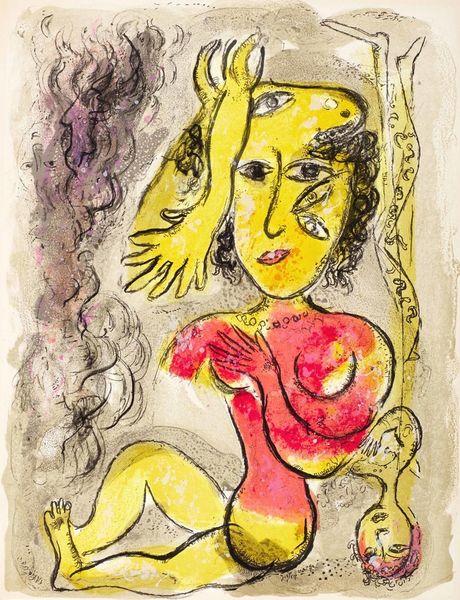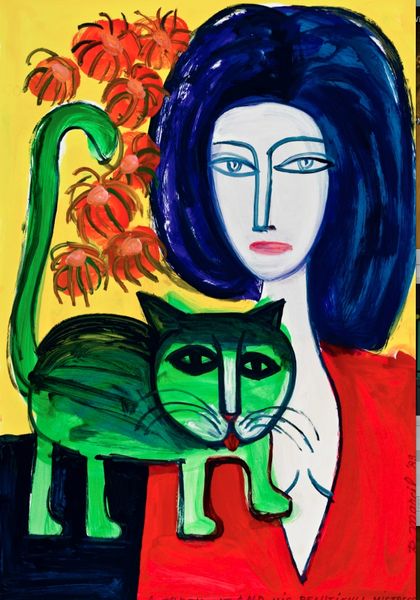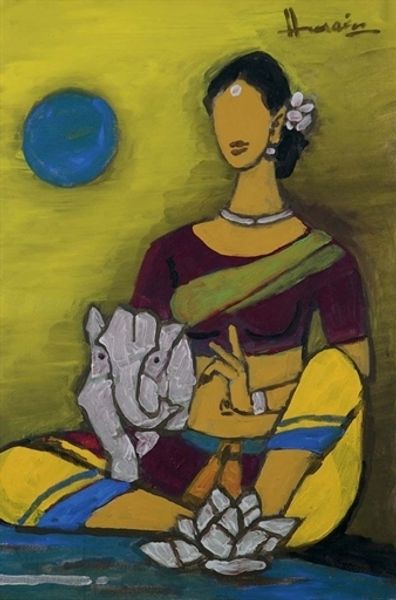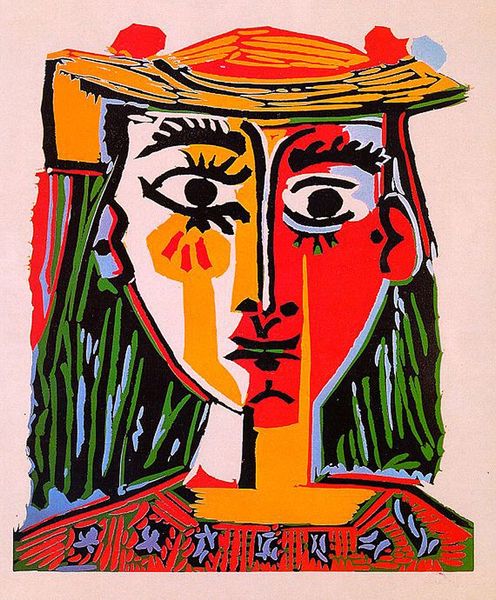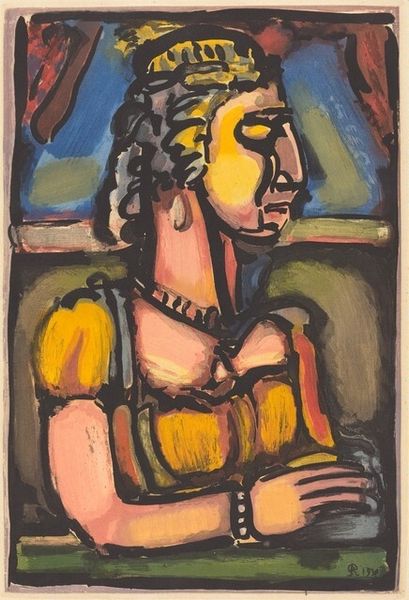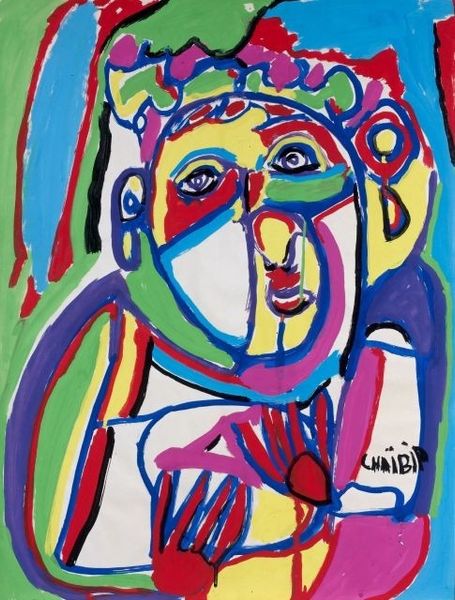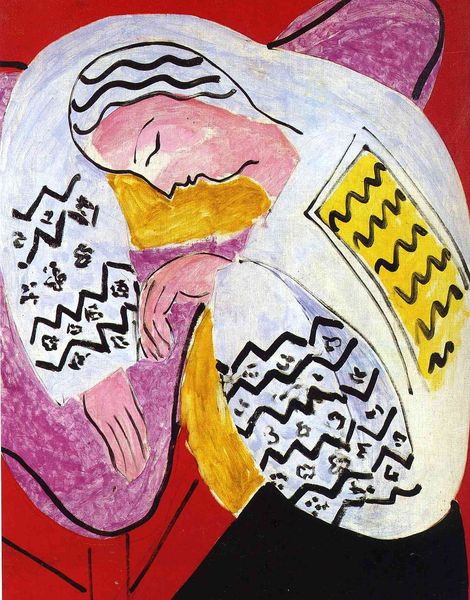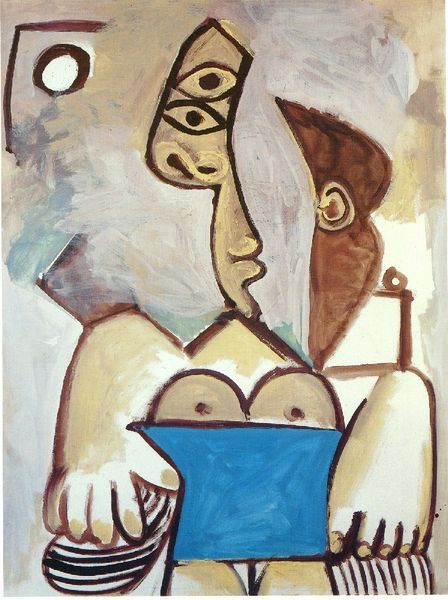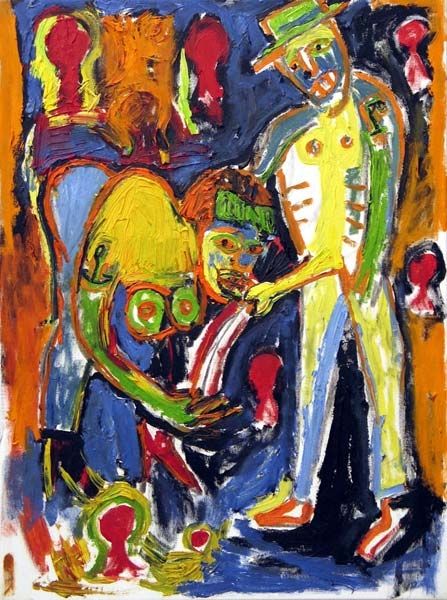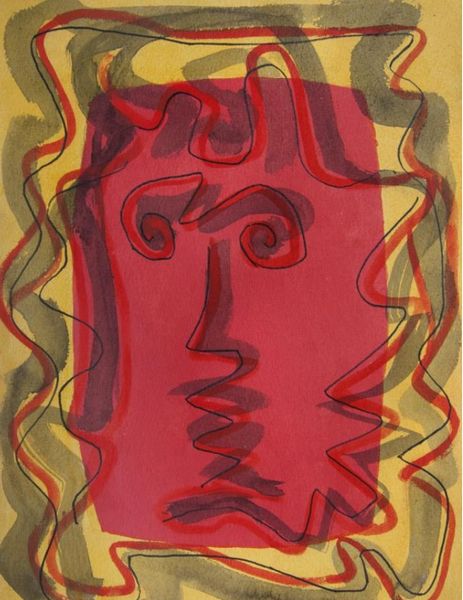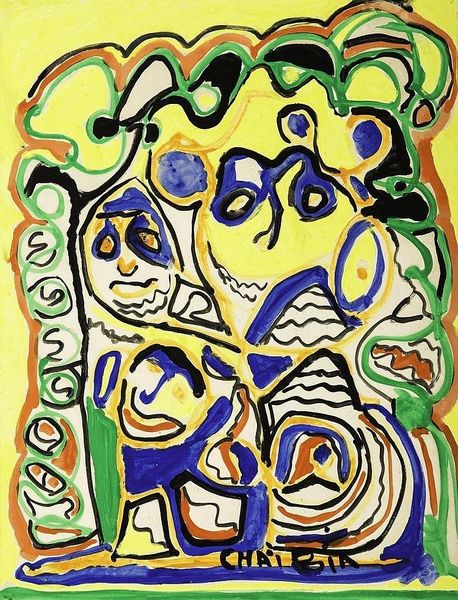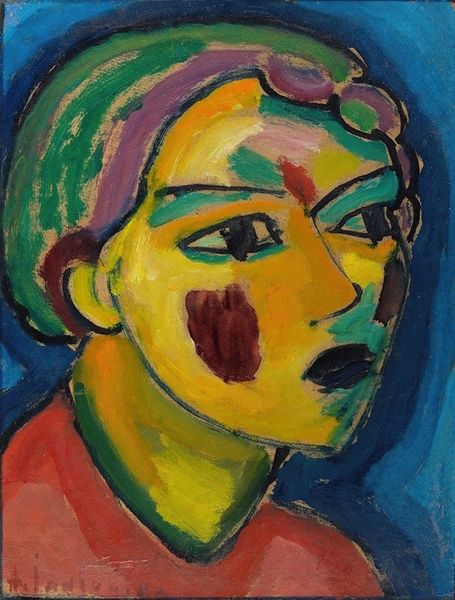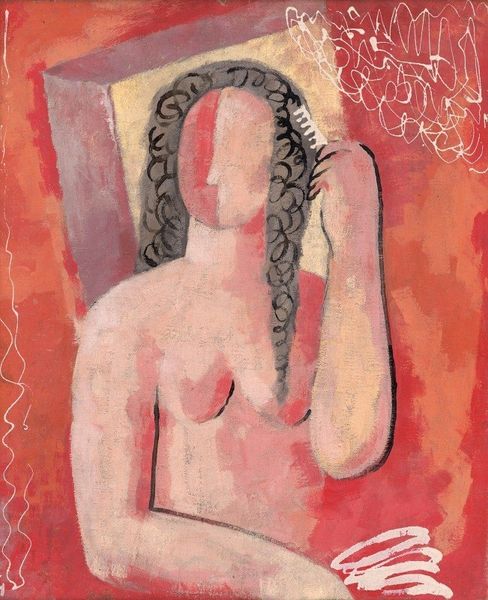
Dimensions: 110 x 75 cm
Copyright: Patrimoine Marcil
Curator: This painting grabs your attention immediately. It's called "This was my lover," created in 1988 by René Marcil, using acrylic paint. The style is clearly influenced by pop art, though leaning toward figuration. What's your initial take? Editor: Well, my first thought is that there’s a very arresting simplicity. The flat planes of colour and heavy outlines create a bold, almost confrontational image, hinting at strong emotion rendered raw. The application is visibly… well, direct, shall we say? Curator: Absolutely, the directness speaks volumes about the materiality. Marcil seems focused on raw emotional output using common materials—affordable acrylic paint allowed the pop art movement a democratic, accessible medium, echoing mass production. We must think of its place in galleries then versus its cultural associations today, no? Editor: Definitely. We're viewing this piece now, in a context far removed from 1988, when this aesthetic still had significant political bite within institutional structures. But there is that duality inherent, isn't there? This is an image concerned with love lost presented with such boldness. Do you see any hints to a social statement here, or an idea about representation? Curator: It's intriguing, the gender dynamics here, too. While clearly figurative, there’s also an element of caricature or mask in that bright yellow, which plays with conventional depictions, I think. The presentation has impact here; by removing fine detail or realism and embracing mass style, Marcil makes a stark statement through reduction of material labour versus expression of feelings of deep intimacy. Editor: True, consider the art's availability beyond a traditional oil painting, it challenges elite spaces. In many ways that shift changed art culture because artists found audiences on every possible surface outside museums and conventional gallery spaces. It reminds us that even paintings centered on highly private topics inevitably take on public life as they are absorbed into an institutional context. Curator: Well, thinking about "This was my lover," it's fascinating to consider how the immediate emotion meets the method and its wider implications about society and class; Marcil certainly pushes at these ideas of materiality and the power within artwork creation. Editor: Agreed. And pondering this today underscores that the power of this raw and visibly produced statement is in both its emotive nature and its historical status of accessible forms of image making.
Comments
No comments
Be the first to comment and join the conversation on the ultimate creative platform.
